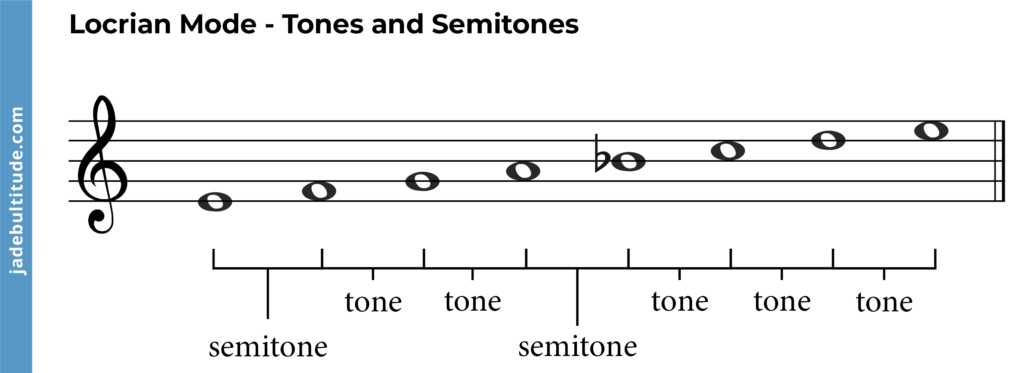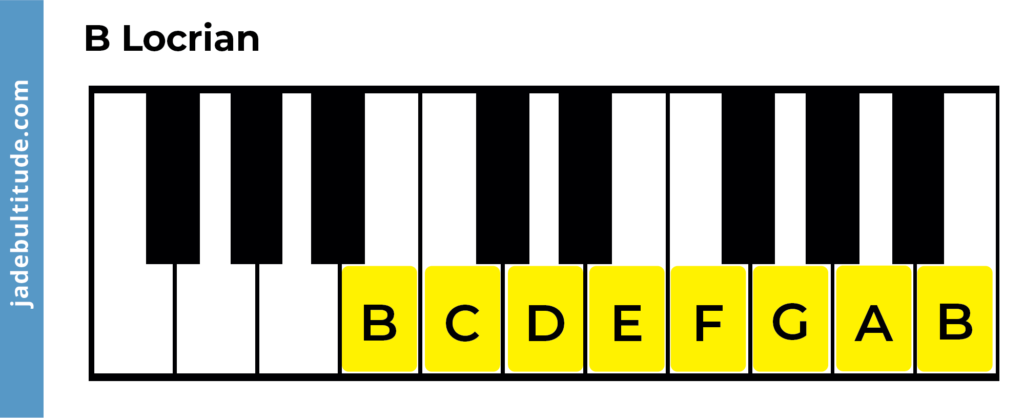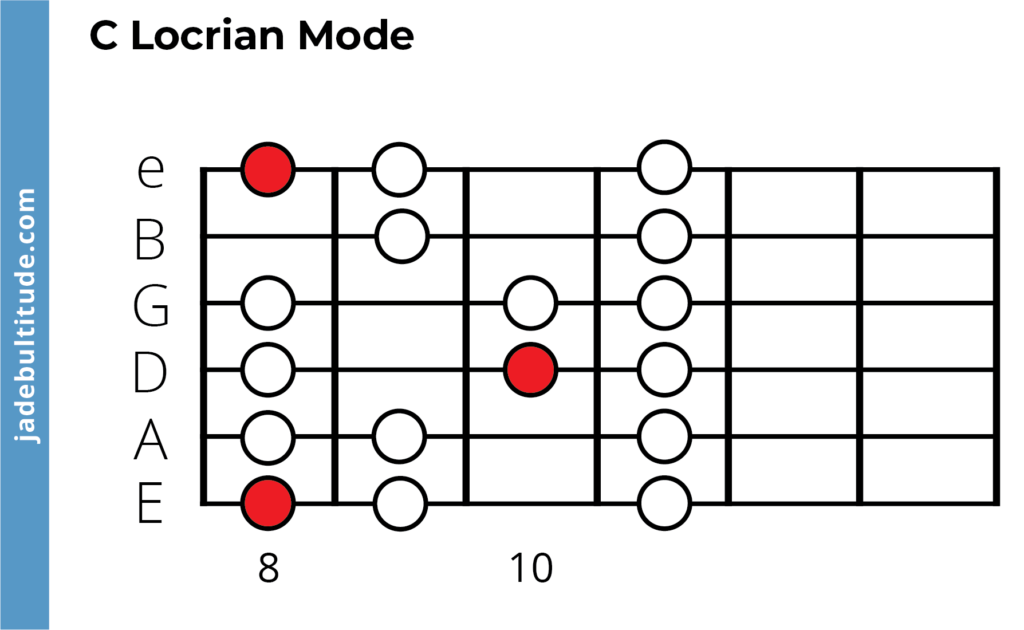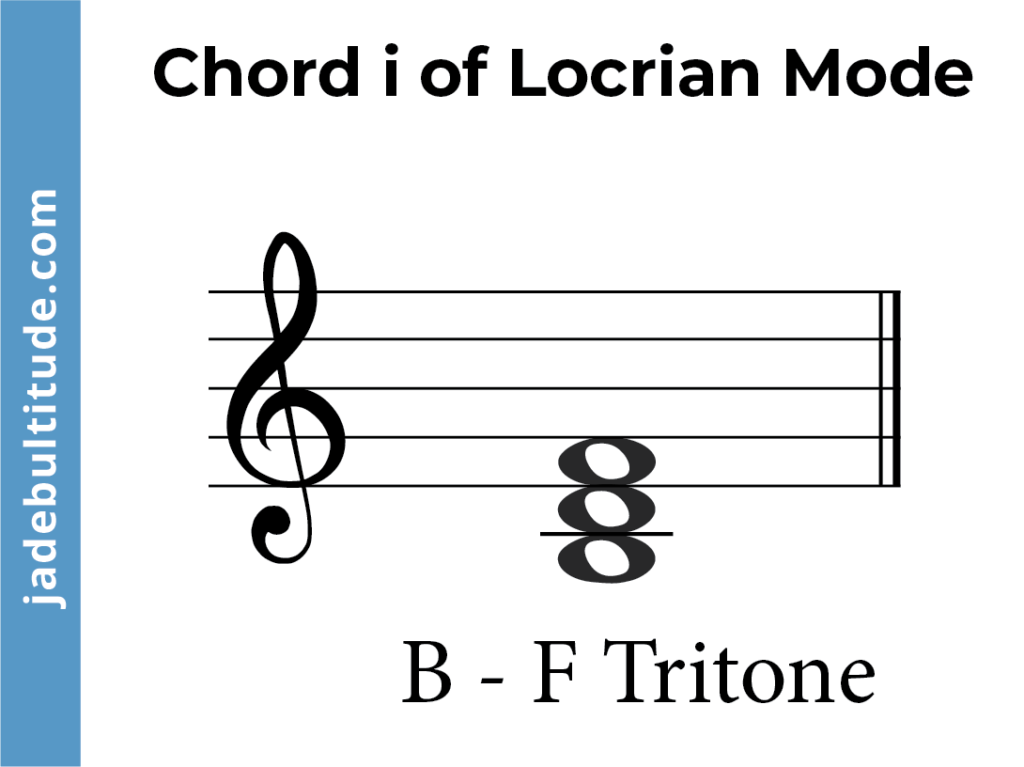There are many different scales in western music and some are more common than others. You will have heard of major scales and the minor scales but the diatonic modes are something totally different.
What are musical modes and why are they important?
The musical modes are a series of seven diatonic scales based on the major scale. The modes are sometimes referred to as Greek Modes or modal scales in music theory.
In any given major key you can play all seven modes. Each of these modes will start on a different scale degree. As you can see all the different modes are very closely related.
If we look at the note sequence of the modes in the C major scale they will be as follows:
C D E F G A B C – C Ionian Mode
D E F G A B C D – D Dorian Mode
E F G A B C D E – E Phrygian mode
F G A B C D E F – F lydian mode
G A B C D E F G – G Mixolydian mode
A B C D E F G A – A Aeolian Mode
B C D E F G A B – B Locrian Mode
All the notes above use the notes from the c major scale.
What is the Locrian mode?
The Locrian mode is a mode that starts on the seventh scale degree of a major scale. As we saw above, if you are in C major, the locrian scale will begin on B. B is the seventh degree of C major. It is the seventh mode of the seven diatonic modes.

If you are in the F major scale, the locrian mode will begin on E. E is the seventh degree of F major. The mode you create will then be the E Locrian scale.

If you are in the G major scale, the locrian mode will be begin on F#. F# is the seventh degree of G major. The mode you create will then be the F# Locrian scale.

The Locrian mode formula
The pattern of whole steps and half steps (semitones and Tones) in the locrian mode will be as follows:
H W W H W W W (S T T S T T T)

The Scale Degrees Of The Locrian Mode
The locrian mode is a minor mode, one of the four minor modes. This simply means that this mode has many of the same qualities as a minor scale.
For a minor scale to sound minor, the third of the scale will be a minor third. In the locrian mode, this third degree is a minor third! This is what gives the scale it’s minor quality.
The degrees in the locrian mode will be as follows:
- Root
- Minor Second
- Minor Third
- Perfect Fourth
- Diminished fifth
- Minor Sixth
- Minor Seventh

How to Play the Locrian Scale
You can play the locrian scale on any instrument. Whether you play the piano, guitar or flute all the modes will contain all the same notes on each instrument. All you must do is learn the notes of that particular mode. Once you are comfortable playing scales you can then begin to play all the modes!
For example, the B Locrian mode consists of all natural notes.
B C D E F G A B
Learn these notes and you can play it on any instrument. Below you can see the notes on the piano, notice how this scale uses only the white keys.

Here is the box chart for guitar players.

Examples of music in the Locrian mode
You will not often hear the locrian mode in music. The locrian mode is the only mode that includes a diminished fifth, this diminished interval makes the locrian mode not sound like any other mode or scale. In fact, the locrian mode can sound unfinished, like you just stopped in the middle of a sentence!
There are very few pieces out there written using the locrian mode, but one great example is dust to dust, a traditional piece of English folk music by John Fitzpatrick. Notice how the phrases do not seem finished!
You can also hear examples of the locrian mode within classical music, particularly within 20th century composers music. Rachmaninoff’s Prelude in B minor utilizes the locrian mode, if you listen carefully you can hear that Rachmaninoff continuously flattens the second and fifth degrees of the B natural minor scale.
List of Locrian Modes
Although the B Locrian scale is the easiest locrian mode to create as it comes from the fourth note of the c major scale, meaning you only have to play the white keys on the piano, you can create a lydian scale on any note you like! As long you keep the same interval pattern you can create the lydian mode on any note. Each of the modes below have been created using the whole step and half step pattern we saw earlier.
C Locrian mode – C Db Eb F G Ab Bb C
C# Locrian mode – C# D E F# G A B C#
Db Locrian mode – Db Ebb Fb Gb Abb Bbb Cb Db
D Locrian mode – D Eb F G Ab Bb C D
D# Locrian mode – D# E F# G# A B C# D#
Eb Locrian Mode – Eb Fb Gb Ab Bbb Cb Db Eb
E locrian mode – E F G A Bb C D E
F Locrian mode – F Gb Ab Bb Cb Db Eb F
F# Locrian mode – F# G A B C D E F#
Gb Locrian mode – Gb Abb Bbb Cb Dbb Ebb Fb Gb
G Locrian mode – G Ab Bb C Db Eb F G
G# Locrian mode – G# A B C# D E F# G#
Ab Locrian mode – Ab Bbb Cb Db Ebb Fb Gb Ab
A locrian mode – A Bb C D Eb F G A
A# locrian mode – A# B C# D# E F# G# A#
Bb Locrian mode – Bb Cb Db Eb Fb Gb Ab Bb
B locrian mode – B C D E F G A B
The Modal Chords Of The Locrian Mode
Locrian scale chords are a series of chords derived from the Locrian scale. To build a chord progression in the locrian scale you must first simply choose chords that can be created with these notes. The first place to start is to create a chord (triad) on every note of the chosen locrian mode. Below you can see a chord built on every note of the B Locrian scale, notice that none of the notes have an accidental on and this is because the B Locrian has no sharps or flats.

Each of these chords can then be labelled so you know what each chord is. If you need to learn more about these labels then make sure to check out our complete guide to chords.
We could also label the chords of the Locrian mode using Roman Numeral notation.

Chord I in the B Locrian scale is a diminished chord as the interval between B and D is a minor third and the interval between B and F is a diminished fifth. The chord we build on the first note is a b diminished chord. We will then label this chord with a lower case i with a small circle (o) next to this to indicate that it is a diminished chord built on the root of the scale.
Each chord can then be labelled in this way and we will then know which chords have a minor quality, diminished quality, augmented quality and which ones have a major quality! If the chord has a major quality the third will be a major third and we will label this chord with upper case Roman numerals. If the chord is an augmented chord we will place a small plus sign (+) next to the Roman numeral.
The Locrian’s flattened fifth creates a tritone in the tonic chord
Notice above that the tonic chord of the locrian mode is a diminished chord. This flattened fifth in the chord creates a tritone interval.
Although you can make a tritone interval in pretty much any mode, it is very rare for this tritone to appear within the tonic chord! This is one of the features of the locrian mode that make it so interesting.

Want to learn more?
To learn more about the other modes you can visit our pages on each mode here:
